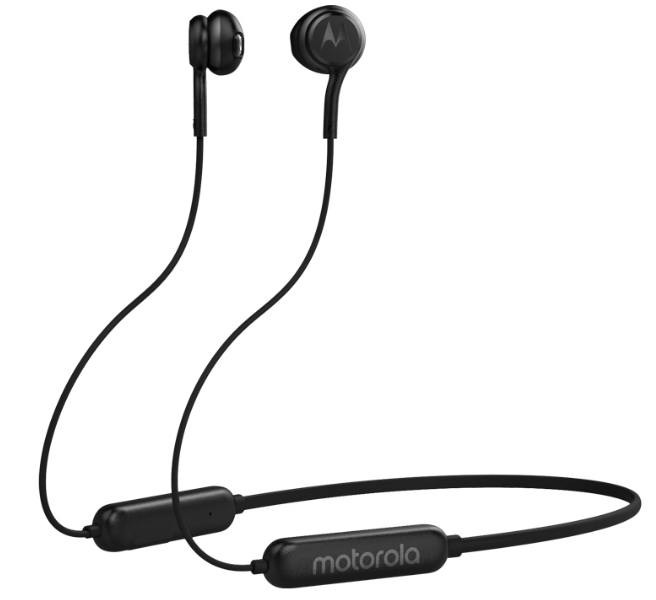Motorola SH064 Bluetooth Earphone User Guide

motorola SH064 Bluetooth Earphone

Charging
- <20%, Red LED flashing
- >20%, Blue LED flashing
- =100%, Blue LED on
Fully charge before use
The device can be powered through a Type-C USB from any CE-compliant power source that implement the European interface as requested by EN 301 489-52.
Pairing
Pairing (TWS mode)
- Open the Charging case lid, while the 2 earbuds are in the Charging case. Long pressing Charing Case button 3 second then enter Pairing model. Paring (Mono BT mode) Should do Mono BT mode reset first. Opne the Charging case lid, keep the reset headphone in the case, Long press the Charging Case button 3 seconds then enter Mono BT paring model
- Select “VerveBuds 350” from the smartphone Bluetooth menu.
- Fitting
- Insert the Vervebuds into your ear and rotate to fit comfortably.
- Insert the Vervebuds into your ear and rotate to fit comfortably.
BASE OPERATION
This device complies with Industry Canada licence-exempt RSS standard(s). Operation is subject to the following two conditions:
| Additional Operation | |
|
Reset (TWS mode) |
Open theC h.irging case lid, keep both earbuds inl heCharging case. LongpressingChar9ingcaset:utton lOsecond,thech.ir9ecaseLEO red-blueflashalternately,pa iring history is reset. |
| Reject a call | MFB2sec |
| Gaming mode ON/OFF | MF82sec(LJ |
| Voice command(S iri/ Google) | MFB 2sec (R) |
| Voice comm;,nd(A lex;,) | MFB2sec(R)(Android) MFB Sing le-tap |
| LED indica tor (o n the charge case) | |
| Open theCh;,rg ing c;,selid BlueLEOon | |
| Type Cch;, rgein | Blue Flash |
| Charge case full battery | Blue on |
| pairing (TWS mode) | Blue fl;,sh |
| Paring (Mono ST mode) | Blue flash |
| Facto ry reset (TWS model Red-blue flash | |
| Reset (Mono BT model | Red -b lue flash |
- This device may not cause interference, and
- This device must accept any interference, including interference that may cause undesired operation of the device. The device has been evaluated to meet general
RF exposure requirements. The device can be used in portable exposure conditions without restriction.
FCC Caution.
This device complies with part 15 of the FCC Rules. Operation is su bject to the following two conditions:
- This device may not cause harmful interference, and
- this device must accept any interference received, including interference that may cause undesired operation.
Any changes or modifications not expressly approved by the party responsible for compliance
could void the user’s authority to operate the equipment note: This equipment has been tested and found to comply with the limits for a Class B digital device, pursuant to part 15 of the FCC Rules. These limits are designed to provide reasonable protection against harmful interference in a residential installation. This equipment gen erates uses and can radi ate radio frequency energy and, if not installed and used in accordance with the instructions, may cause harmful interference to radio communications. However, there is no guarantee that interference will not occur in a particular installation. If this equipment does cause harmful interference to radio or television reception, which can be determined by tuming the equipment off and on, the user is encouraged to try to correct the interference by one or more of the following measures:
- Reorient or relocate the receiving antenna.
- Increase the separation between the equipment and receiver.
- Connect the equipment into an outlet on a circuit different from that to which the receiver is connected.
- Consult the dealer or an experienced radio/TV technician for help.
RF exposure
The device has been evaluated to meet general RF exposure requirements. The device can be used in portable exposure CondiTion without restriction.